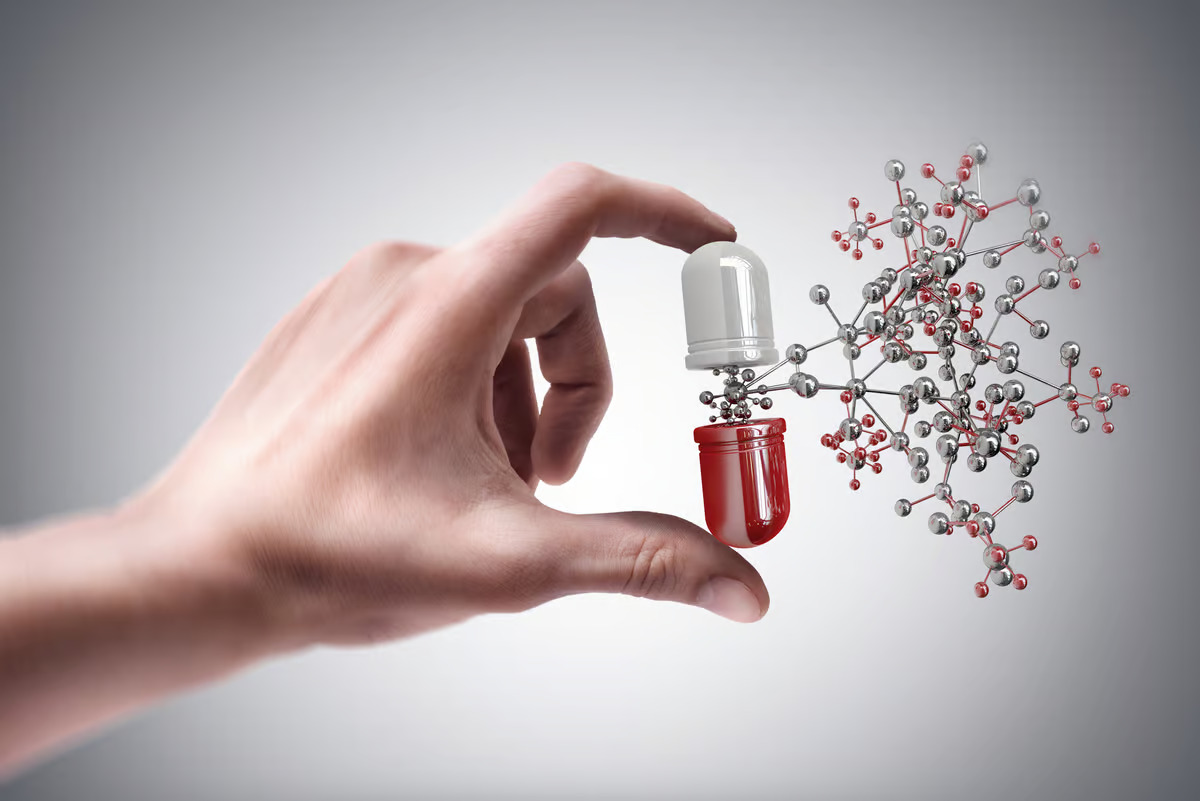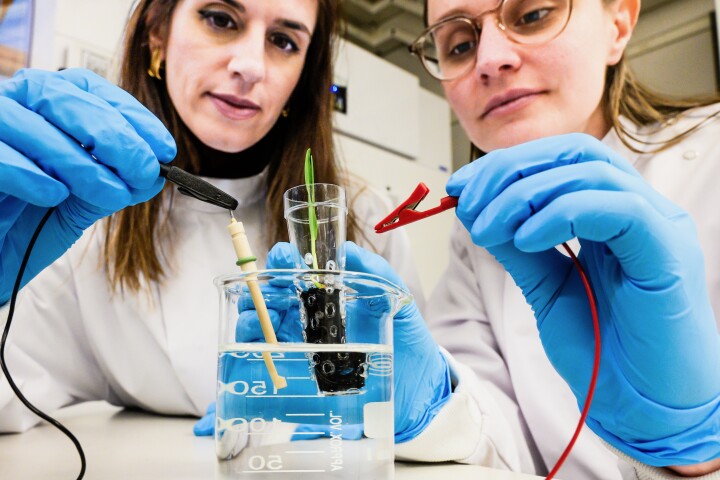 Researchers created a groundbreaking peptide that may mean injectable drugs can be taken orally. Depositphotos
Researchers created a groundbreaking peptide that may mean injectable drugs can be taken orally. Depositphotos
Comprised of short chains of amino acids, naturally occurring peptides serve many functions, including acting as hormones, growth factors, and neurotransmitters. They also play an important role in pharmaceuticals. Peptide therapeutics commonly mimic their naturally occurring counterparts to provide life-saving treatment. The injectable insulin used by diabetics is just one example.
Peptide therapeutics have inherent advantages: high potency and selectivity and good efficacy, safety, and tolerability. However, there are downsides when it comes to oral administration. Most peptide therapeutics are large molecules, degrade in the harsh environment of the gut and most often can’t cross cell membranes, necessitating their administration by injection. By comparison, many oral drugs are small molecules with simple chemical structures, so they easily diffuse across cell membranes to reach their intracellular target, producing more predictable therapeutic effects.
But in a new study, researchers from Switzerland’s École Polytechnique Fédérale de Lausanne (EPFL) achieved a major milestone in drug development: creating a novel peptide that may overcome the problems associated with oral administration.
“There are many diseases for which the targets were identified, but drugs binding and reaching them could not be developed,” said Christian Heinis, corresponding author of the study. “Most of them are types of cancer, and many targets in these cancers are protein-protein interactions that are important for the tumor growth but cannot be inhibited.”
As an aside, biological activities are regulated through protein complexes, typically controlled via protein-protein interactions (PPIs). Studies have associated aberrant PPIs with various diseases, including cancer, infectious and neurodegenerative diseases. Since classic drug targets are usually enzymes, ion channels, or receptors, targeting PPIs is an essential strategy for the development of new drugs.
Building upon their previous research to develop a ‘peptide pill’, the EPFL team turned their sights to cyclic peptides, which can bind to challenging disease targets with high affinity and specificity. But, like existing peptide therapeutics, they’re subject to the same problems in terms of oral administration.
“Cyclic peptides are of great interest for drug development as these molecules can bind to difficult targets for which it has been challenging to generate drugs using established methods,” Heinis said. “But the cyclic peptides cannot usually be administered orally – as a pill – which limits their application enormously.”
Undeterred, the researchers developed a two-step strategy to synthesize cyclic peptides that would remain stable when taken orally. The first step was synthesizing linear peptides and subjecting them to cyclization so they formed ring-like chemical structures connected by a metabolically stable thioether (carbon-sulfur-carbon) bond. Thioethers are present in some amino acids and can be created in the lab by the reaction of a thiol with a base and an electrophile, an electron-deficient molecule or atom that’s happy to take electrons from another one to make a new covalent bond. In step two, the cyclized peptides underwent the process of acylation, which attaches carboxylic acids to them to diversify their molecular structure further.
The process occurred in the same reactive container – referred to as one-pot synthesis – which eliminated the need for intermediate purification steps and allowed for high-throughput screening directly in the synthesis plates. The researchers targeted the enzyme thrombin, a critical disease target because of its central role in blood clotting and, therefore, thrombotic disorders like strokes and heart attacks. Using the one-pot method, they synthesized a comprehensive library of 8,448 cyclic peptides with an average molecular mass of about 650 daltons (Da), just slightly above the cutoff of 500 Da recommended for orally administered small molecules. They then screened their library of peptides against the disease target thrombin.

The researchers tested their thrombin-inhibiting cyclic peptides on rats. They showed an oral bioavailability of up to 18%, meaning that 18% of the drug entered the bloodstream and had a therapeutic effect when administered orally. While it might not sound particularly impressive, consider that orally administered cyclic peptides generally show a bioavailability of below 2%. The researchers say it’s a significant advancement for biologic drugs, including peptides.
“We have now succeeded in generating cyclic peptides that bind to a disease target of our choice and can also be administered orally,” said Heinis. “To this end, we have developed a new method in which thousands of small cyclic peptides with random sequences are chemically synthesized on a nanoscale and examined in a high-throughput process.”
The study’s results have opened up the possibility of treating a range of diseases that, until now, have been a challenge to address using oral drugs. The versatility of the one-pot synthesis method means that it can be adapted to target a wide range of proteins, potentially leading to breakthroughs in areas where medical needs are currently unmet.
“To apply the method to more challenging disease targets, such as protein-protein interactions, larger libraries will likely need to be synthesized and studied,” said Manuel Merz, the study’s lead author. “By automating further steps of the methods, libraries with more than one million molecules seem to be within reach.”
The next step for the researchers is to target several PPIs. They’re confident they can develop orally administered cyclic peptides for at least some of them.
The study was published in the journal Nature Chemical Biology.
Source: EPFL via EurekAlert!
–
























